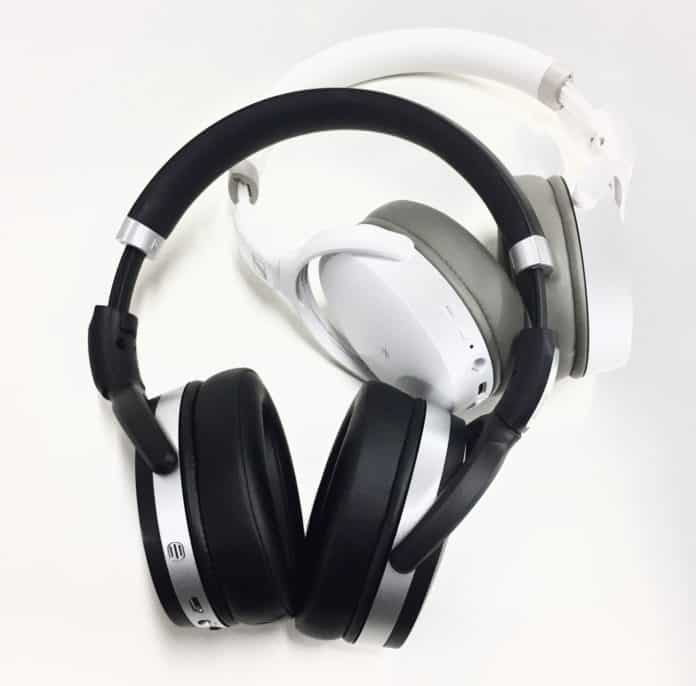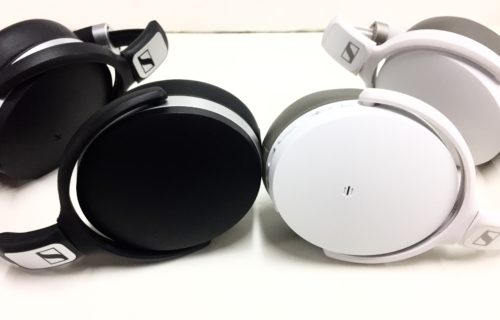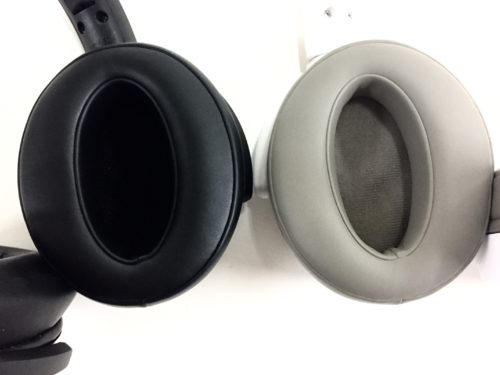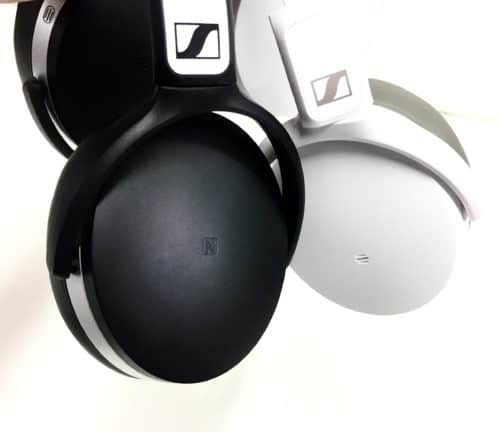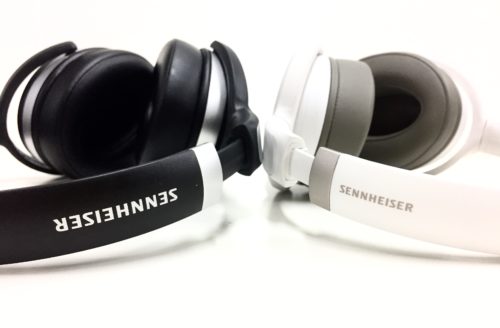I can’t lie: Sennheiser’s naming system is getting a bit confusing. The names of the Sennheiser HD 450BT and HD 4.50BTNC differ in only two aspects: the NC at the end of 4.50BTNC (obvious), and the decimal point (not so obvious).
On the other hand, the two headphones sound fairly different. They’re also priced significantly differently, with the HD 450BT at $200, and the HD 4.50BTNC at a paltry $120. So the question for the day is: is the HD 450BT worth it over the HD 4.50BTNC? It’s actually a pretty complicated question – these two headphones sound similar in a lot of ways. At the end of the day, I do prefer the HD 450BT, and I’ll explain why; but I’m not convinced that my opinion will hold for the vast majority of people.
Build, Comfort, Appearance
Well, you’ll just have to wait for the answer to that question. First, I’m going to talk about build and comfort.
Looks-wise, the HD 450BT and HD 4.50BTNC are clearly from the same family of headphones, sharing the same narrow headband and unadorned oval-shaped earcups, among other things. Well, you can see them for yourself in the included photographs.
As with appearance, so too is the build quality relatively similar between these two. Though they’re both made chiefly of plastic and rubber, the build feels solid on both. I wouldn’t have many reservations about throwing them in my backpack for portable use, although I can’t make guarantees on that front.
The biggest difference in terms of comfort is the size of the earpads. While the HD 450BT’s earpads are slightly too small for my ears, the HD 4.50BTNC’s are slightly bigger, allowing my ears to fit totally inside (though only just – people with big ears should still be cautious). Everything else feels the same between the two.
Functionality
NOTE: I had previously stated that the HD 450BT doesn’t have active noise cancellation. But a vigilant reader has pointed out that the HD 450BT in fact does have it – what a slip-up by me! Yes it does; but if it was weak enough to go unnoticed by me the first time around, it can’t be that impressive.
Of course, as the “NC” would suggest, the HD 4.50BTNC is equipped with active noise cancellation. Despite the lack of “NC,” the HD 450BT also comes with noise cancellation (something I missed on my first go-around). Neither headphone’s noise cancellation is class-leading, though, and for excessively noisy conditions, I would look for a slightly quieter headphone.
But with the HD 450BT, there’s a slight problem: these don’t get very loud. Although I couldn’t reach ear-splitting volumes with the HD 4.50BTNC, I could get them significantly louder than the HD 450BT. And if you’re the type of person who likes to, quote-unquote, “rock out” while listening to your headphones, I can’t in good conscience recommend the 450BT (although I may not recommend the 4.50BTNC either).
Otherwise, these both function perfectly fine, with no interruptions in the Bluetooth connectivity.
While the 450BT is rated at 30 hours of playback time, the 4.50BTNC is slightly worse, at 25 hours. Both of these results, though, are good for their class.
Sound Quality
When it comes to sound, these sound relatively similar – it’s obvious that they’re both from the same family. However, there are some slight differences that are worth noting. And if you’re looking for a more comprehensive description of either headphone’s sound signature, you can check out our individual reviews for both of them – the HD 450BT and the HD 4.50BTNC.
In essence, both of these headphones have a clean, balanced, slightly laid-back sound. They’re good Bluetooth headphones. I do slightly prefer the sound of the HD 450BT, and I’ll explain why.
It’s not because of the tonal balance – the HD 4.50BTNC is actually more neutral and more well-balanced than the HD 450BT. In comparison, the HD 450BT has a slightly dark and muddy sound. The treble of the 450BT comes off as slightly recessed, meaning that some top-end detail is pushed to the back. The upper mids of the 450BT are also pulled back slightly in comparison with the 4.50BTNC, meaning that the 450BT has a more relaxed, easygoing sound to it.
However, I also find that the 450BT is slightly more resolving than the 4.50BTNC. By that, I mean that going from the 450BT to the 4.50BTNC, I hear the 4.50BTNC as slightly “grainier” and “rougher”-sounding than the 450BT. So what the 450BT lacks in tonal balance, it makes up for in smoothness. The specs support this conclusion – the 4.50BTNC has slightly higher distortion specs than the 450BT.
The 450BT also beats the 4.50BTNC handily on soundstage. Due to its laid-back sound, things can sound like they’re happening quite far away from you. For a close-back Bluetooth headphone, that’s rare, and very valuable. In contrast, the 4.50BTNC is more energetic and in-your-face (though not too much).
However, for $120, the HD 4.50BTNC gets you 95% of what the HD 450BT offers, and it’s better-balanced, to boot. So unless you’re interested in what the 450BT offers (a dark, laid-back, spacious sound), I find the feature-rich 4.50BTNC to be an easier recommendation.
In Conclusion
If all you’re looking for is a well-balanced, comfy, inoffensive portable headphone, the HD 4.50BTNC continues to be the pick from Sennheiser. However, I find the HD 450BT to be a more enjoyable listen for its unique and relaxed sound signature.
Check them both out at Audio46: the HD 450BT here, and the HD 4.50BTNC here. Or at Amazon: the HD 450BT, or the HD 4.50BTNC.
Technical Specs
| Specification | Sennheiser HD 4.50BTNC | Sennheiser HD 450BT |
|---|---|---|
| Price | $119.95 | $199.99 |
| Sound Pressure Level(SPL) | 113 dB | 108 dB |
| Distortion | <0.5% | <0.3% |
| Playback Time | 25 hours | 30 hours |
Also, feel free to check out our review about Strauss and Wagner’s Active Noise Canceling Headphones.
As a disclaimer, MajorHifi may receive commissions from retail offers.
MAJORHIFI may receive commissions from retail offers.


